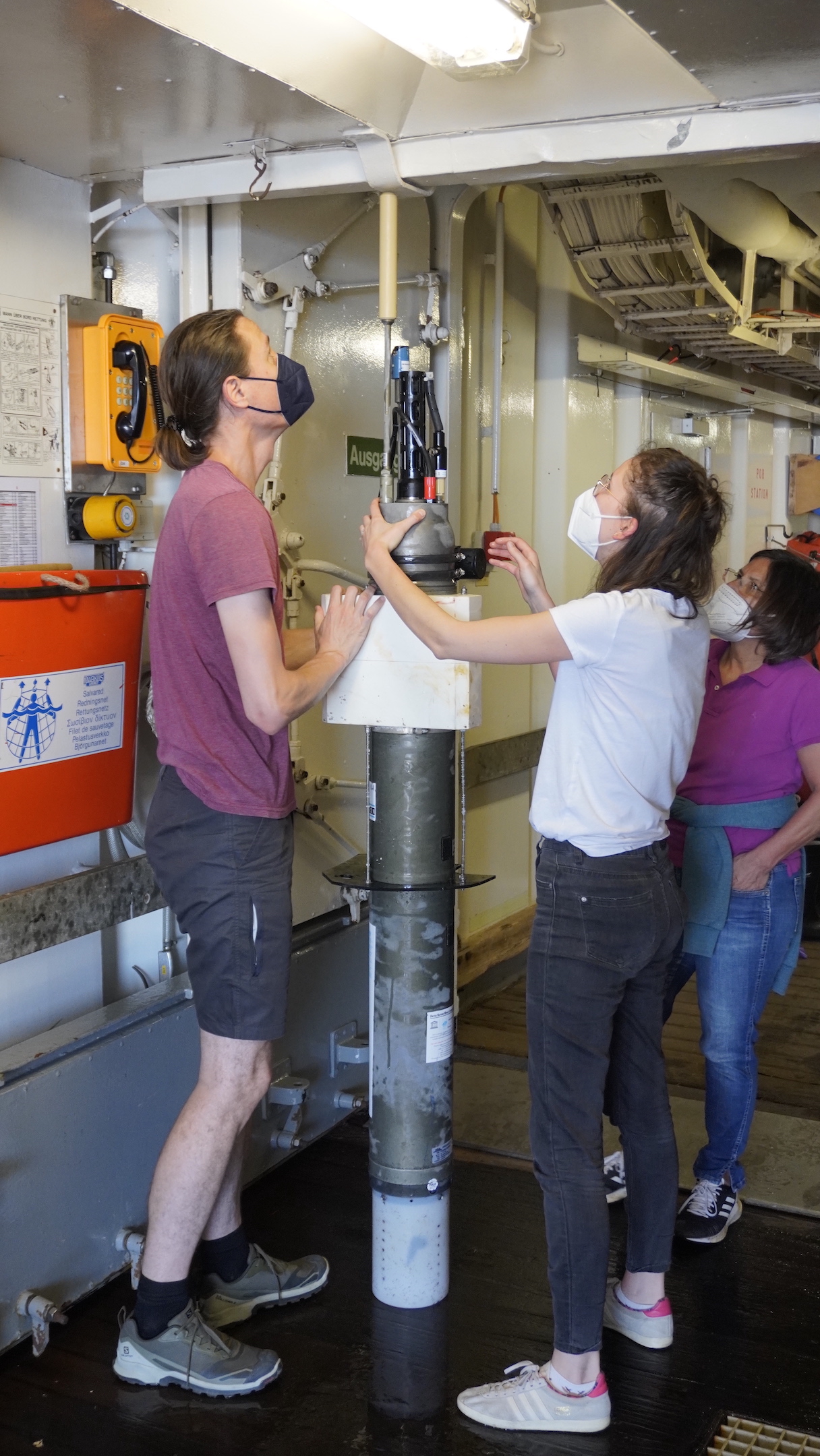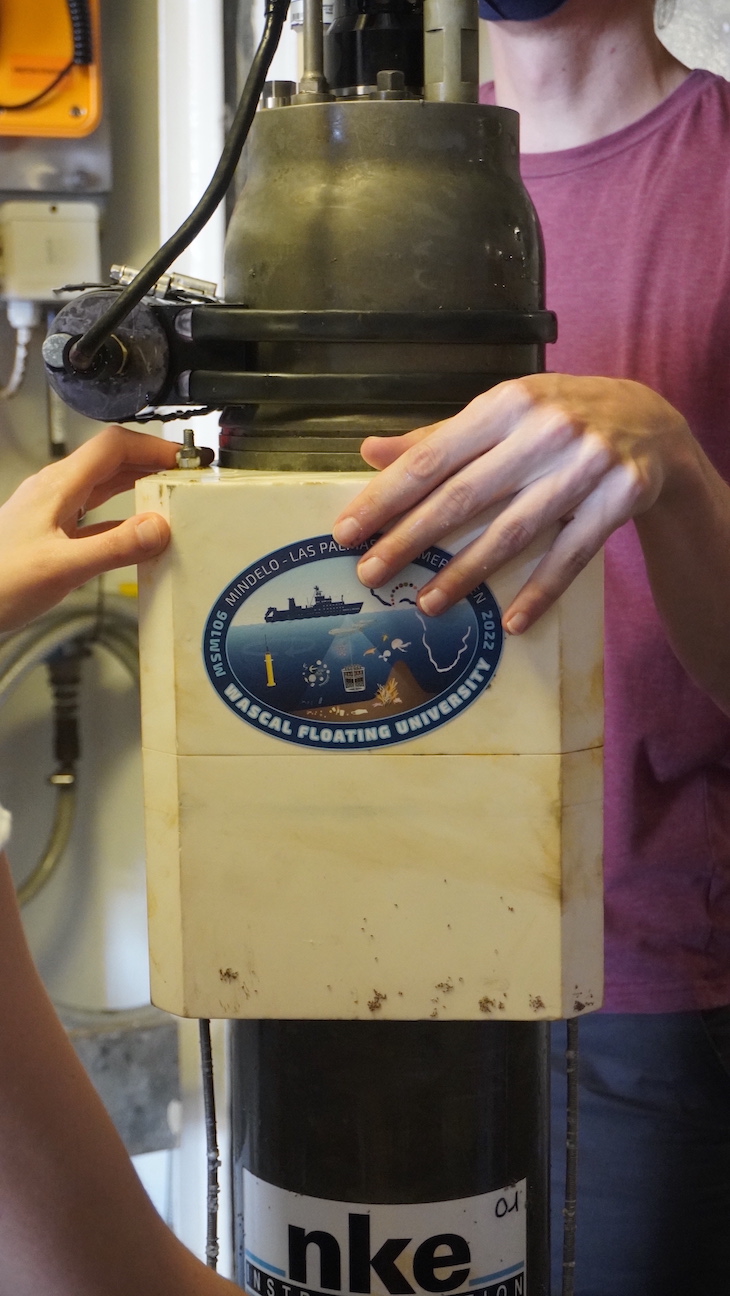You dive down to a thousand meters depth and cruise around, letting the currents take you where they want. Every now and then a fish may curiously appear, then swim into the deep blue, leaving you alone in your cold, dark wet world. The only times you see light are when you rise to the surface and peek out of the water before descending again. Up, down, drift, repeat.
You’re a whale? Nope – you’re a float! Not a natural wonder but a human-made metal cylinder with little aesthetic appeal, floats are drifting through the world’s ocean, robots with just one task – to collect crucial data on the state of the ocean. At any one time, around 4000 of these instruments are cruising the remotest parts of this planet where hardly a ship passes with regularity.

A year ago, our float (its real name is Argo WMO7901001) was sent out during the first WASCAL floating University, where a group of 12 Master’s students were out on their training cruise from Cabo Verde to Bremerhaven. Now, a year later, the next cohort of students is back at this site. Henry Bittig, a biogeochemist from the IOW in Warnemünde, Germany, communicates with the float every time it is at the surface, and it sends him the newest batch of data from its last dive. The float was instructed to stay at the surface and wait for the Polarstern to approach. Henry is now on the bridge, scanning the vast expanse of ocean to pick up the signal from a 2-cm antenna peeking out from the whitecaps – talk about finding a needle in a haysack! Luckily the transponder is broadcasting its signal, allowing the captain to gently move his coloss – the 118-m 12000-ton Polarstern to position. A Zodiac is deployed, and the float picked up. Mission successful!

Back on ship, the float is washed down and data is extracted – terabytes of unique information on the temperature, salinity, etc. etc. in this remote part of the ocean. Oceanographers like Henry rely on these and other autonomous instruments that cruise the ocean in the service of science, releasing humans from the vagarities, expense and time of going out by ship. The data collected by this float, and other autonomous instruments like it, provides invaluable insight into the biogeochemistry of the ocean. Specifically, we are able to receive data on oxygen, chlorophyll, suspended particles, and more in the northeast sub-tropical Atlantic. This information allows us to better understand the state of our ocean and make more informed decisions when it comes to preserving this crucial ecosystem.
The Polarstern picks up speed – on to the next station where students and scientists on board will go through the laborious process of taking samples and measurements – one site and one day at a time. In the wet lab the float lies in its crate heading for the land laboratory where it will be serviced and redeployed. Science has just gained a year of semi-continuous data, all without a single scientist getting wet!
Avan
PS135/2 participant
Kiel University
